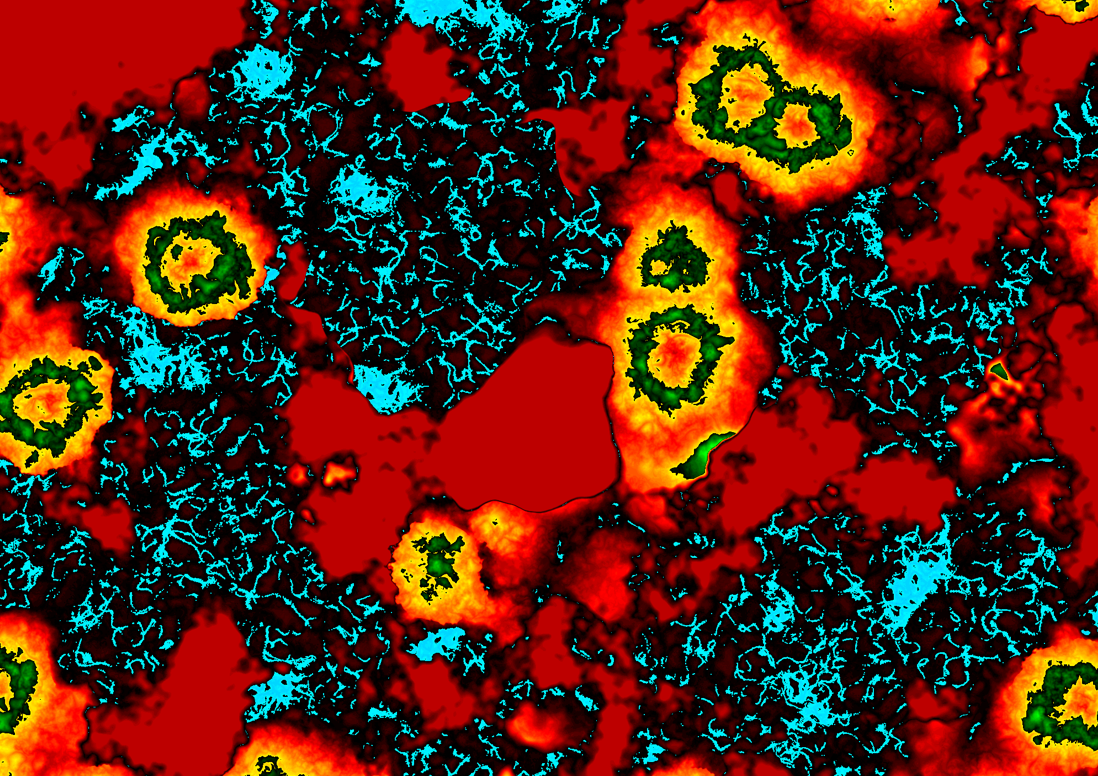Factorio pretty much rewrote its world generation to account for new planets—like this volcanic one
Work for the upcoming expansion is having serious ripples in the base game features.

Factorio's upcoming Space Age expansion and the free Factorio 2.0 update that goes with it means a lot for the factory-building game, especially because the effort on developer Wube Software's part to update many game systems and the underlying code base have made huge changes to what's possible inside Factorio.
A recent series of customary blog posts from Wube have taken on the idea of map generation, addressing how that system was very simple for Factorio proper but needed a lot of fine-grained updates and complex additions in order to account for all the new terrain and worlds that the Engineer's journey into space would need.
Basically, the current one-world version of Factorio needs some relatively simple sets of functions to generate its relatively earth-like world. These come via a pretty standard set of noise expressions, basically a very common way for developers to make procedurally generated stuff look integrated and visually varied rather than perfectly geometric. Adding new worlds meant new functions were needed. Like, for example, the varying heights and lava canyons of upcoming Vulcanus.
"All in all, around 90% of the noise expression engine was rewritten from scratch," wrote developer Genhis on the Factorio blog.
That makes sense if you get a look at the height map of a normal Factorio world and then compare it to Vulcanus. Here's a normal map, left, contrasted with the heightmap, right.

Where a normal Factorio world has a few peaks or highlands, in green, and a few lakes or oceans, in blue, with plains in red, Vulcanus has... this.
Keep up to date with the most important stories and the best deals, as picked by the PC Gamer team.

The sheer difference between those two maps really speaks a lot to how much this expansion is going to vary up gameplay in Factorio. It's not just how flat the environment is on the starting world compared to somewhere like Vulcanus, a huge change in and of itself, it's the idea of dealing with lava-filled canyons and sulfur geysers as resources—who doesn't love the idea of pumping up magma to turn strain the metals out of it?
The full blog posts include lots of interesting images of how a noise map becomes a playable in-game world, and a lot of insights for those interesting in the mathematics and programming side of game development. Or who just like to move sliders on interactive images around.
You can go to the Factorio blog to read more about noise-based map generation or the volcano world Vulcanus.
You can find Factorio on its website, which is also where you can buy it, among other places like GOG, Humble, and Steam. It never goes on sale, but it does have a free demo.
Jon Bolding is a games writer and critic with an extensive background in strategy games. When he's not on his PC, he can be found playing every tabletop game under the sun.

